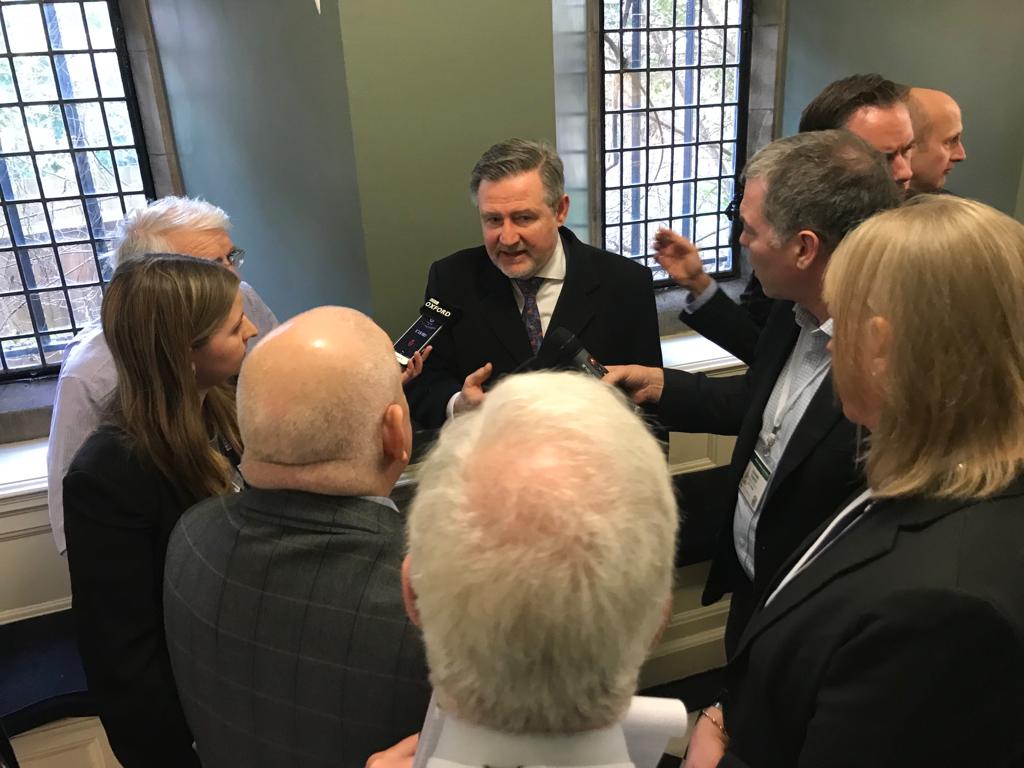One of our busiest press events of the year is the Oxford Farming Conference, with 80 members of the press attending this year between television news, broadsheets and the agricultural media. The press room, where the conference is streamed, is always a great buzz of activity, as are the press conferences which follow the key sessions and throw up the gritty questions for the panellists.
Although the pace of the conference leaves little let up for anyone, this is our annual water cooler moment with all the great journalists we work with throughout the year, and we love it.
We feel very privileged to be part of such a thought-provoking, progressive and esteemed industry event, which is a clear litmus test of views, opportunities and intentions of the farming world at the start of each year. Apart from the inspiring line up every year of innovators, scientists, politicians and business achievers, it is an incredibly powerful networking event with people gathering from across the industry without pretension and many successful collaborations have started here.
NFU President Minette Batters recalled that she had come to OFC for the first time 20 years ago and it had taken all her courage to ask a question from the floor. Never had she imagined she would now be leading the industry’s union at such a critical time in political and farming history.
Over the 15 years that Jane Craigie Marketing has worked with The Oxford Farming Conference, so much has changed. The rapid advances in the industry have been reflected in the press room. In the early years, speeches were collected after a session, rushed along to the press room to be copied and distributed to journalists. Journalists are now typing as they go and have stories on their editor’s screens almost before the session ends.
The sessions break out of the stone walls of the Examination Halls and are across the Twittosphere as soon as words are uttered, reaching the media and wider world in an instant.
Live polls through the new conference app give real-time results for journalists to incorporate instantly into articles and share multiple perspectives.
JCM also introduced a virtual press room this year for the conference, which, updated with presentations, hi-res images and online streaming of the politics session with Michael Gove, made it easier for the press to file their stories quickly and widened the reach to journalists and influential parties unable to attend.
The presentations are put online a few days after the conference. Sir Lockwood Smith, a New Zealand farmer, politician and trade expert, injected some fresh thinking on markets and trade this year and his presentation has been watched over 1500 times in the last 10 days.
Like all communications specialists, we are constantly on the crest of a wave, swept along by the power and pace of developing technology and finding ways to make the most of it. Digital communications has undoubtedly brought us all closer (diminishing social skills arguments aside), whether we are in the same room or physical miles apart, and we have noticed over the last few years what a community has built up around OFC in tandem with its digital developments, not least on Twitter.
This has had a positive impact on bookings for the conference, the media coverage of the event and the valuable engagement of the wider industry sharing ideas, opinions and opportunities which informs the conference organisers, us as marketeers and the journalists following the industry.
